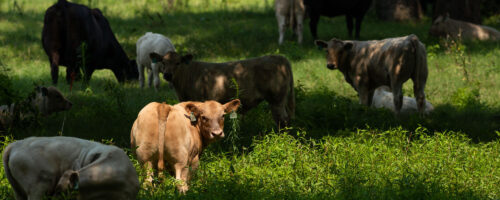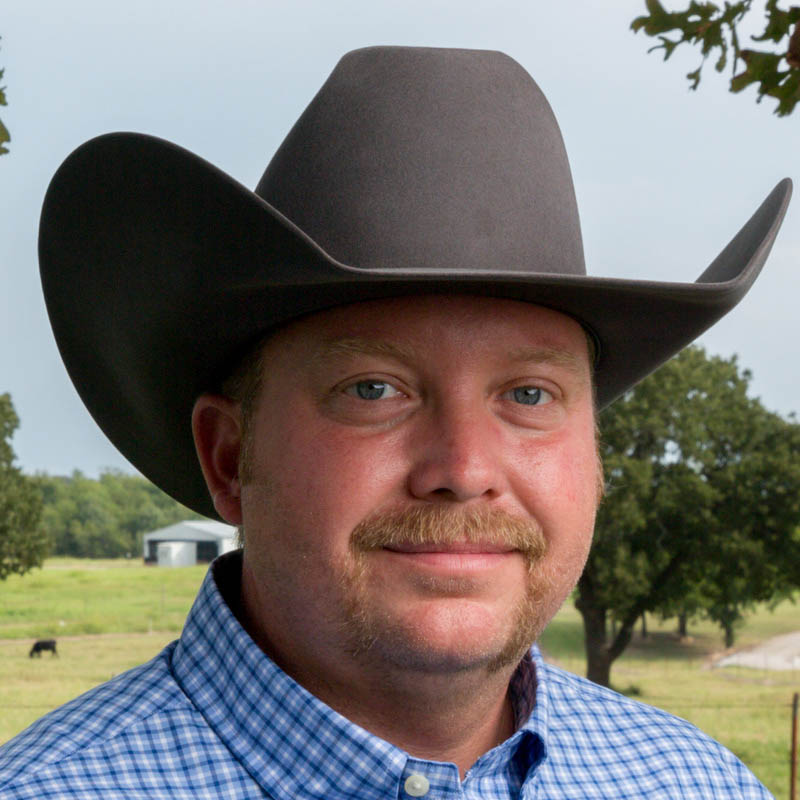The Silvopasture Approach to Regenerative Agriculture
Integrating trees, forages and livestock with a silvopasture system can boost income and soil health while reducing the need for outside inputs.
Silvopasture is one of the oldest known forms of agriculture. Just as its name is a combination of the Latin words “silva” (forest or woods) and “pastura” (feeding or grazing), silvopasture is the intentional integration of trees, domesticated animals and forages managed together as a single, multilayered production system.
For producers starting or expanding their regenerative journey, adding one or more components to create a silvopasture system can be an entry point with multiple benefits to your land and your bottom line.

Silvopasture benefits
Silvopasture involves using trees, forages and animals in a complex, interdependent system. Compared to other conventional systems, silvopasture is very complex but has multiple advantages. Silvopasture can mitigate methane emissions from livestock and sequesters significantly more carbon in tree biomass and the soil biome, leading to healthier soils, than a rangeland system. In a silvopasture system, you are managing the animal, pasture and tree components equally. As a manager, you might be working toward producing three products, one from each of the components of the silvopasture system. This can lead to greater financial benefits, with income generated from each enterprise. The system is adaptable to many different operations, and each system has its unique context, allowing for multiple combinations of animal types, pasture types and tree types.

6 Types of Agroforestry
Silvopasture: The intentional and coordinated use of trees, animals, and forage.
Forest Farming: Crop production in a forest setting.
Alley-cropping: Traditional field and row crops grown between trees.
Windbreaks: Using trees of various heights to create a barrier from wind
Riparian Buffers: Trees and shrubs planted or naturally occurring along the sides of waterways.
Forest gardening: Edible and medicinal crop production planted in such a way to mimic natural forest ecology.
Major components of silvopasture
Silvopasture is a system of stacked inputs and outputs. The parts of the whole receive inputs and give outputs to other parts of the system, producing greater total outputs from the entire system.
You can create a silvopasture system by introducing forage into a forested setting or by planting trees in a pasture setting. Almost any land type can be used in the establishment of a silvopasture system.
A silvopasture system requires animals in the system, but the correct livestock choice needs to be matched to the land type and successional stage. Animals need to be rotated continuously and often. Multiple grazing systems exist that follow this pattern. Forages evolved with large herds that would graze then move on because of predator pressure as well as depleted forage. This evolution led to forages needing periods of consumption and periods of rest.
Trees should match the land and soil type, be adaptable to the microclimate created by the silvopasture system and have multiple functions. Trees need not be a drain on the system but could be if the wrong type is chosen for the area.
In a silvopasture system, forage and fodder should be as diverse as possible. Diversity makes entire ecosystems healthier, including animals and trees. Lack of diversity or a monoculture system can lead to disease, insect damage and other problems.

Silvopasture in regenerative agriculture
As a type of agroforestry commonly practiced in many cultures worldwide, it is estimated that silvopasture is practiced on 1.36 billion acres of land globally. Its practice in the United States is not as common, however, partly because the “New World” was so vast when European settlers began farming here.
Fruit and nut and silvopasture systems covered large portions of central Europe historically and until the 20th century. When Europeans began colonizing the Western Hemisphere, the practice of silvopasture didn’t follow. In the New World, agricultural practices changed because of the vast lands available. The land was divided, with open land used for agriculture (grazing and crops) and the forest for hunting and gathering. Trees were removed from the system altogether unless they had an agricultural purpose as a nut or fruit orchard or as timber. The new practices often didn’t work with nature, but instead tried to control nature.
However, silvopasture did not disappear entirely from practice. Many U.S. agricultural practitioners still use both natural and established silvopasture systems. A great example of a silvopasture system is the pecan/livestock system of the South and southern Plains.
Pecans are a native commercial nut crop in the United States. As a tree crop, they lend themselves well to this type of system, allowing a commercial nut crop to be harvested and providing shade for the livestock grazing in the surrounding pasture. The livestock can be used to manage your pasture and, when grazed correctly, can improve soil health through animal impact. The livestock themselves are also another product for the producer. The pasture provides forage for the livestock and serves as an essential component of soil health and a habitat for many beneficial organisms.

Producers looking to transition to regenerative agriculture would do well to consider silvopasture. The system works with the principles of regenerative agriculture and is a balanced system that can provide multiple incomes while reducing the need for outside inputs. Silvopasture can provide regenerative agriculture results and economic stability when each component – animal, forage and tree – is purposely and deliberately managed as parts of a synergistic whole.


Comment
Leave a Reply
2 comment on: "The Silvopasture Approach to Regenerative Agriculture""

Pete Pulis
July 30, 2023I have some young Pecan trees on my Ranch in Roxton Texas and am interested in developing them to a silvopasture/savannah system.
How can I discuss this with Mr Chaney?
Delvin D Dupuy
September 27, 2023I would like to talk with someone concerning implementing the silvopasture system into my farm. I have 110 acres close to Bokchito that needs some healing. I am doing some planting and stewarding of the land, but mostly by the seat of my pants and comments from my friends. I would like to have a long term land management plan that would include pecan trees. I had read many articles on regeenertive agriculture and believe in its pricnciples.
Please contact me by phone or email. 469.562.1994